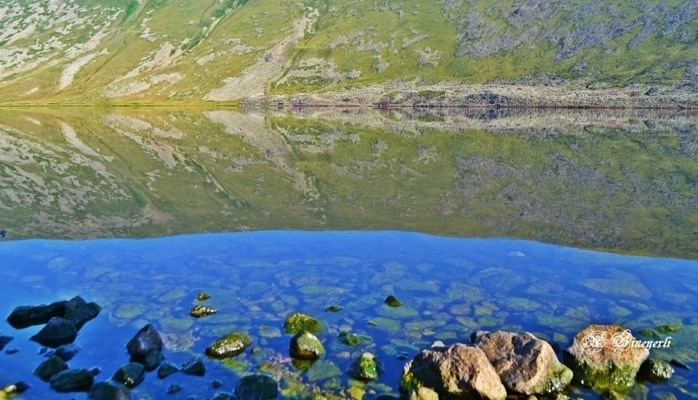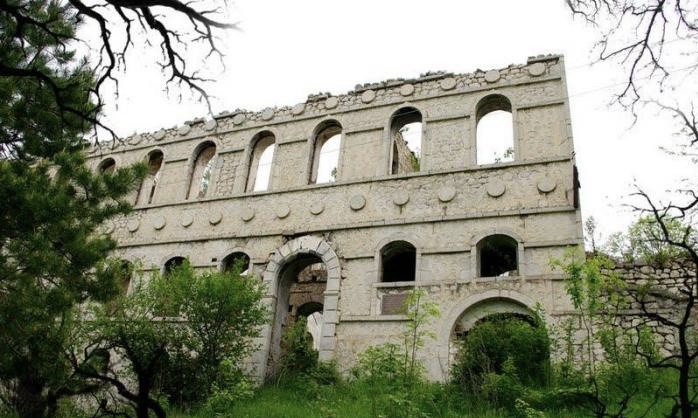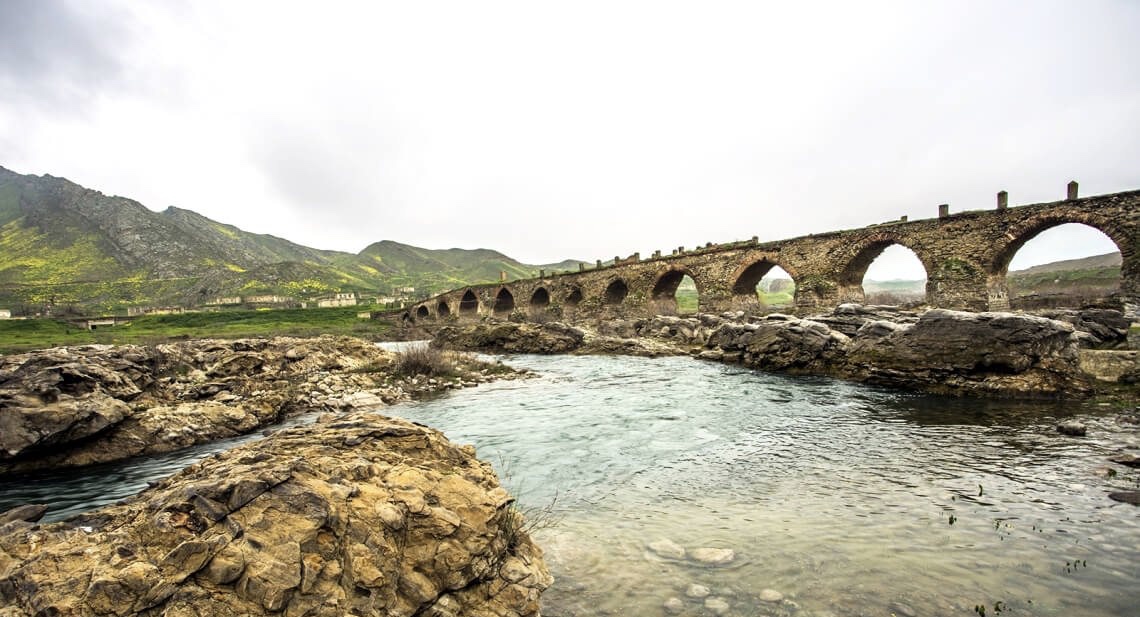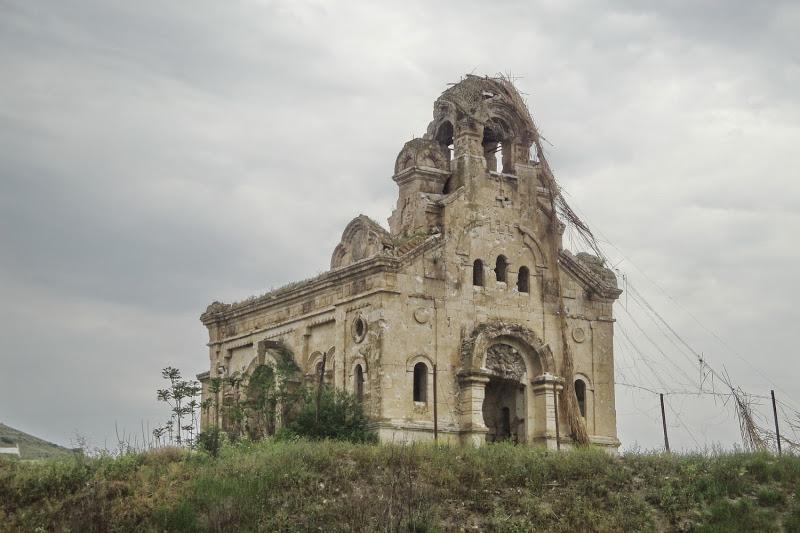






of







of







of





















A valuable example of the Elkhanids’ memorial architecture has survived in the district’s Khachin Turbatli village of the Aghdam district. A construction inscription above the front door of this site, popularly called “Sari Musa’ Tomb”, says “Master Shahbenzeri has built this tomb for the deceased Gutlu Khaja Musa Oglu, who needs Allah’s mercy”. By this inscription, the Tomb was finished on July 15th, 1314. It seems the tomb of the person, who was an influential figure of Azerbaijan’s historical Khachin District, has determined the village’s name (“Khachin + Turbet (“tomb”) + li (a postfix)).
A valuable example of tower-shaped tombs, the building’s exterior contains of three-type low benches, a 12-side prismatic body and tent-like pyramidal dome. The body and benches are covered with good- hewn yellowish lime. The nine sides of the body have beams, while the northern, eastern and western sides have door and window frames arranged. Because of a large size and artistic concept, the northern frame is the main entry.
The top pointed segments of all niches, doors and windows in the tomb body have been processed through subtle stalactite compositions. Fine pilasters, to an extent seeming too small for stone architecture, were constructed in the body corner. Besides stalactites, facade surfaces are decorated with stone carvings and different symbolic animals (bulls, lions, deer, rabbits, etc.)
For live appearance on the natural stone, these pictures were dark-red-painted. The Tomb has dynamic volume composition, which is typical for Azerbaijan tower-shaped tombs. However, the original features of Aran, including Karabakh, architecture found themselves in both the construction technique and artistic decisions of this site.
The Tomb has a double constitution of the under vault and over ground chamber. The both of them are cruciform. Unlike the severe and simple-looking vault, the interior of the top chamber is extremely luxurious. The square central part of the interior covering and beam sections joining it from the North and South have complicated and subtle stalactites. The south wall, facing the front door, is like a richly decorated mehrab (altar). Lie in the facade, some elements of the mehrab decoration are dark-red-painted.
The high level of the artistic and constructive solutions of the Tomb interior demonstrate the customer’s power and resources and the architect Ustad (“Master”) Shahbenzeri’s great professional skills and experience. A perfect piece of architecture, the Gutlu Musa Tomb with dignity demonstrates the time’s philosophic and artistic tendencies.
After the occupation of Aghdam by Armenian Armed Forces in 1993, the Armenians erased the wall paintings and inscriptions of the tomb, and carved small cross-paintings and Armenian inscriptions in stone instead.

Qaragol Interrepublics State Reserve was set up with the decision of the Council of Ministers dated November17, 1987. Garagol State …

The idea of establishing Aghdam Bread Museum, which is considered to be the second in the world after the Zurich …

The Khurshudbanu Natavan’s House is a historical and architectural monument of the 18th century located in the city of Shusha. …

Museum Mausoleum Complex of Molla Panah Vagif is located in Shusha, Azerbaijan. It was built in honor of Molla Panah …

The Bridge belongs to the Arran architecture school. The first written source that mentioned the 15-arched Khudafarin Bridge belongs to …

Garghabazar Caravanserai was built in 1681 at the hillside, in the center of Garghabazar village of Fuzuli district, 8 km …

Armenia’s vandalism in Nagorno-Karabakh and seven surrounding regions affected not only the historical, cultural, and religious heritage of Islam but …

Jabrayil History-Ethnography Museum has been operating since 1953. Archaeological and ethnographic materials belonging to the history of the region, textiles, …

Khudavang, or Dedeveng, Monastery Complex is located in the Vang village of Kalbajar District, on the left bank of Tartar …

“The 19th century Aghdam Juma Mosque is perhaps the only structure that has withstood the years of neglect since the …